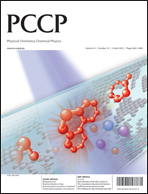Three near infrared (NIR) metal-free organic sensitizers (FNE32, FNE34, FNE36) based on the thieno[3,4-b]pyrazine derivative have been designed and synthesized for application in quasi-solid-state dye-sensitized solar cells (DSSCs). These organic dyes demonstrate maximum absorption bands at 596–625 nm due to the presence of the thieno[3,4-b]pyrazine derivative, which facilitates the intramolecular electron transfer from the donor to the acceptor. Quasi-solid-state DSSCs based on FNE34 display efficient photoelectric conversion over the whole visible range extending into the NIR region up to 900 nm with maximum incident monochromatic photon-to-electron conversion efficiency (IPCE) of 77%, yielding a short-circuit photocurrent density of 16.24 mA cm−2 and a power conversion efficiency of 5.30%. To the best of our knowledge, this is the highest efficiency for quasi-solid-state DSSCs based on an organic NIR dye. When exposed to one-sun illumination for 1000 h, the quasi-solid-state DSSC based on FNE34 exhibits good long-term stability with almost constant power conversion efficiency.
![Graphical abstract: Near infrared thieno[3,4-b]pyrazine sensitizers for efficient quasi-solid-state dye-sensitized solar cells](/en/Image/Get?imageInfo.ImageType=GA&imageInfo.ImageIdentifier.ManuscriptID=C2CP40441A&imageInfo.ImageIdentifier.Year=2012)
You have access to this article
 Please wait while we load your content...
Something went wrong. Try again?
Please wait while we load your content...
Something went wrong. Try again?
![Graphical abstract: Near infrared thieno[3,4-b]pyrazine sensitizers for efficient quasi-solid-state dye-sensitized solar cells](/en/Image/Get?imageInfo.ImageType=GA&imageInfo.ImageIdentifier.ManuscriptID=C2CP40441A&imageInfo.ImageIdentifier.Year=2012)

 Please wait while we load your content...
Please wait while we load your content...